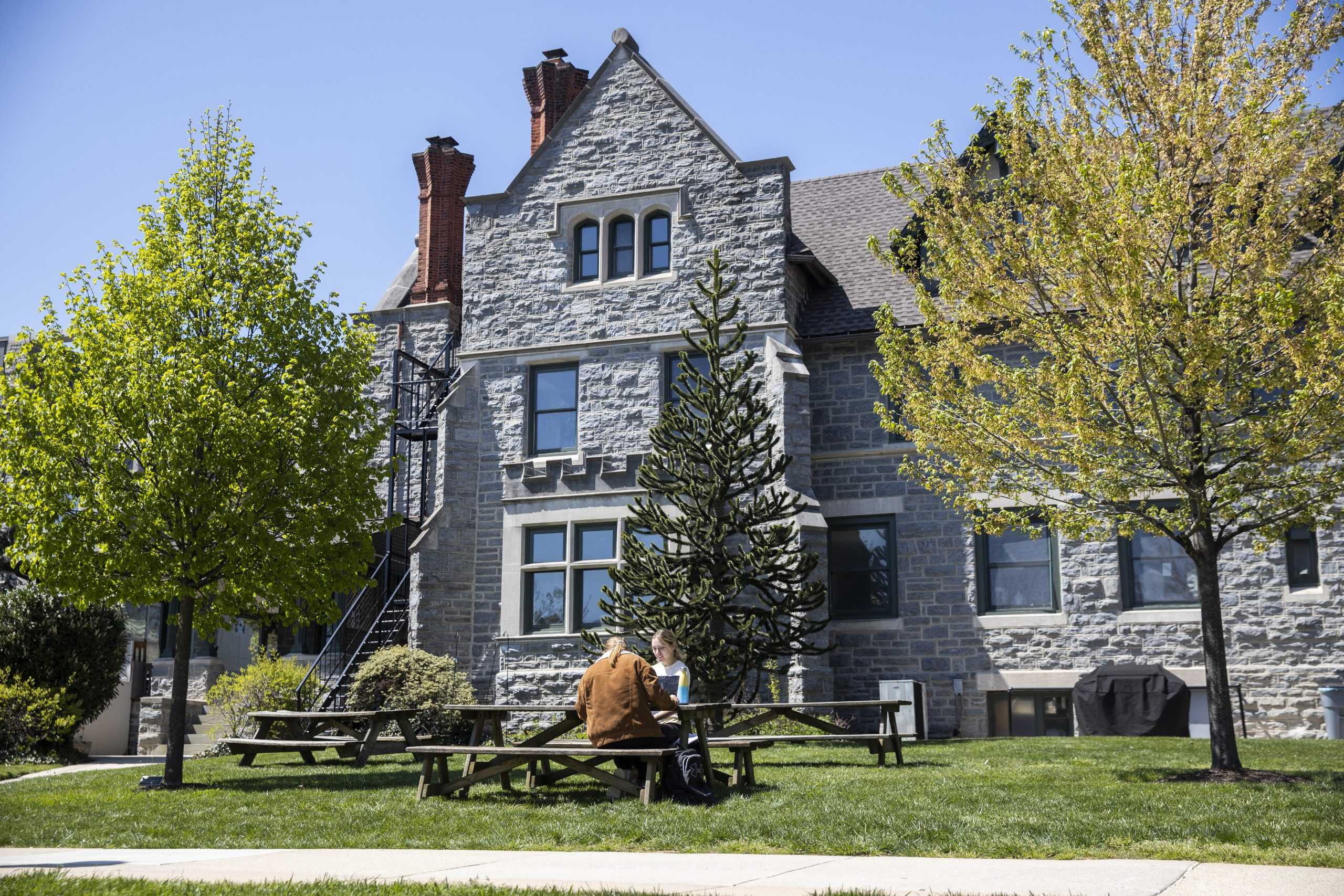Because of COVID-19 restrictions, hanging out on campus is not what it used to be. Campion Dining Hall has limited seating, residence halls don’t allow guests and the majority of classes this year meet online or in a hybrid format.
Enter the picnic tables outside Wolfington Hall, which have become the epicenter of the community on campus during a rough year. Even though there are only four of them. And they are falling apart.
“This year, I think I’m using them the most that I’ve ever used them,” said Maggie Dunn ’22, who uses the picnic tables to study and meet friends about once a week. “With COVID, it’s really nice to be able to sit outside and see people.”
The tables can sit six people each (though, um, not socially distanced), and often draw in students looking for outdoor seating to eat their meals from Campion or a place to relax between classes.
There are other beat-up picnic tables on campus, like one behind Merion Hall and another near Mandeville Hall. There are also other outdoor options like the tent on Villiger Lawn and “Barb Beach.” They just don’t measure up to the Wolfington tables, according to fans of the tables.
“Barb Beach is concrete, and the tables are not as comfy as picnic tables,” said Grace Sammon ’23, a picnic table regular, who uses them four to five times a week to study and attend her online classes.
For Dunn, it all comes down to the sunlight.
“The sun shines on them for longer, and it’s warmer, especially during this time of year where it does get chilly still,” Dunn said. “I love to spend time outside, so I will spend most of my day outside if I can.”
Sammon also likes the picnic tables’ central location, which makes seeing people, an occurrence more difficult than ever due to the coronavirus pandemic, more feasible.
“Everyone walks by between classes because everyone goes through Campion,” Sammon said. “So if I see someone, I’ll wave down my friend and say, ‘Come over here.’”
As if to demonstrate, Sammon, who was sitting at the table while talking to The Hawk, saw her friend, Liam Majewski ’22, and called him over.
Majewski said he liked the central location of the tables, too.
“It’s a high traffic area where I can see a lot of people,” Majewski said. “It’s nice to get to see people I haven’t seen in a while.”
While the tables have proven to be a valuable resource for connections, students said they could use some upgrades.
Sarah Walker ’22 said the biggest problem with the tables is their lack of proximity to electrical outlets. And in a school year filled with Zoom classes and virtual meetings, access to charging stations is vital.
“I’ll occasionally stop by [the tables] for a couple of minutes. I’d love to sit out here longer, but unfortunately my laptop doesn’t stay on if it’s not plugged in,” Walker said. “The school should have charging stations or maybe portable chargers that you could bring outside.”
Beth Hagovsky, Ed.D., director of Student Leadership & Activities, said the university is evaluating outdoor seating options.
“We want to watch traffic patterns for the rest of the spring semester, and then maybe make some real determinations this summer about, do we need more picnic tables, do we need some more benches, should we invest in some more sturdy Adirondack chairs and place them in strategic places around campus,” Hagovsky said.
Tim McGuriman, associate vice president in the Office of Administrative Services, wrote in response to written questions from The Hawk that there are a number of factors the university uses to determine where new furniture is placed.
“We evaluate pedestrian traffic patterns to guide our efforts in where outdoor furniture is placed,” McGuriman said.
In the meantime, Dunn has ideas.
“Umbrellas,” Dunn said. “I want to work outside, but sometimes it’s so hot that it gets our laptops to overheat, or you can’t see your screen.”
Majewski has a vision for what the space could be as well: it doesn’t involve picnic tables at all.
“A good public hammock selection in this area would be good,” Majewski said. “University hammocks, maybe a little SJU emblem. It could be gray on a red background.”
Kenzie Allen ’23 contributed to this story.














































